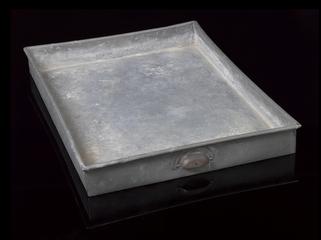




Watchman's clock with pegging mechanism for recording warder patrols at Sussex Lunatic Asylum/Brighton County Borough Asylum, Haywards Heath, by John Moore and Sons, Clerkenwell, London, 1870-1899
When the Sussex Lunatic Asylum opened in 1859 there were 400 patients. Doors to the wards and corridors were locked. Attendants patrolled the male and female sleeping areas. This ‘pegging clock’ time device was part of a ‘tell-tale system’. The Grandfather-type clock has no hands, but a rotating dial. Around the dial are ‘pegs’. These had to be pushed in at the right time. It showed staff were alert and where they should be. It also showed they were safe from attack.
This system is symbolic of the rules, regulations and surveillance routines in large Victorian asylums. It also shows how staff as well as patients were rigidly controlled by institutional life. This contrasts with the flexible care now offered by psychiatric nurses in the community.
Details
- Category:
- Psychology, Psychiatry & Anthropometry
- Object Number:
- 1996-271/25
- Measurements:
-
overall: 1860 mm x 415 mm x 235 mm,
- type:
- time register
- credit:
- Princess Royal Hospital




